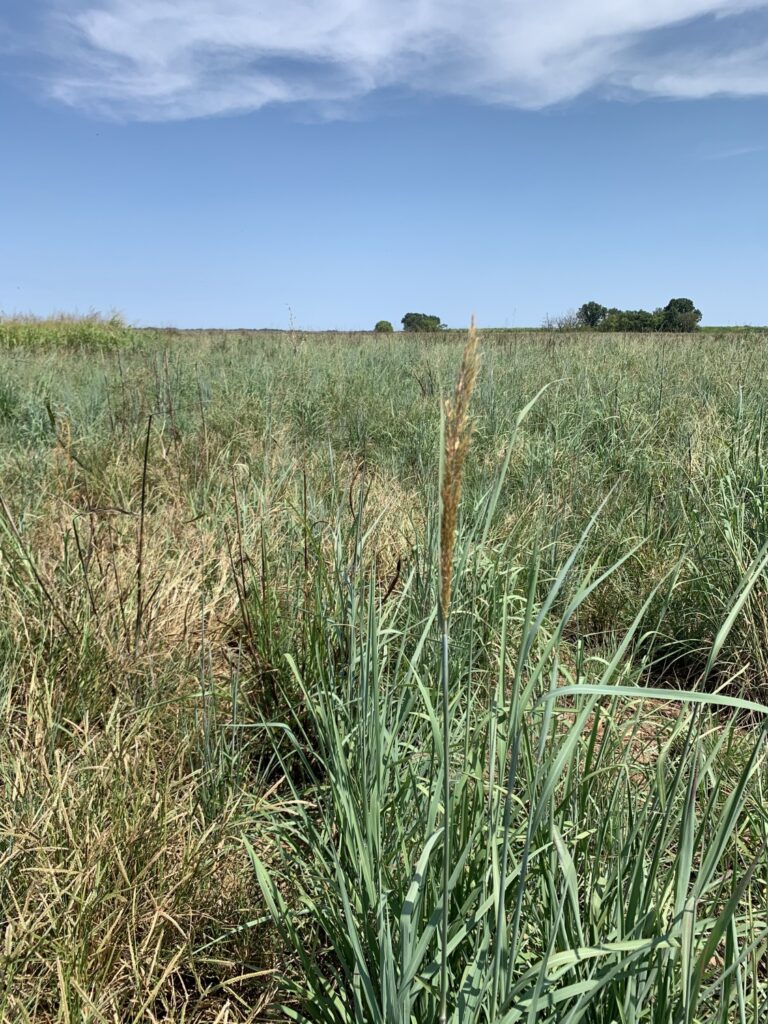By Rob Cook, Director of Business Development, Bamert Seed
Many times our customers ask if they should fertilize, or ask us to give a fertilization recommendation based off of the species of grass in the blend they’re planting. Unfortunately there is no way for us to give a responsible answer to those questions without the results of a soil test. Without a test, it is just a guess. The results of a proper soil test will give the best available picture of the nutrient levels in the soil and then allow a professional to give a fertilization recommendation for the establishment of the native blend. Knowing what levels are present allows for the application of the proper amounts. Under application could lead to undesirable results while over application is throwing money away.
Unfortunately, many times the site of a reclamation project is in a degraded state because of previous management, land use, or extreme disturbance. This means that the soil nutrients will not be present in sufficient amounts for stand establishment. At Bamert Seed Company, we normally suggest applying Phosphorus (P) and Potassium (K) and adjusting pH to appropriate levels according to the results of a soil test for establishment. Proper P and K levels are especially important for establishment and root development. A soil pH level that is too low or too high can make the nutrients in the soil unavailable to the plant and hinder or slow stand establishment. We don’t normally recommend applying Nitrogen (N) for establishment. More often than not the N will just go to growing weeds and not aid in the establishment of a native blend.
It is important to send a sample to a reputable lab. Depending on your location, there could be several options relatively close by. Contact extension in your area to locate a soils lab. A soil test that is done incorrectly is just as useless as no soil test at all. To take a proper soil test there are a few things we need to remember.
#1. Proper Testing Depth
Soil nutrients are stratified through the soil profile and soil tests are calibrated to account for this. Shallow soil samples will show more nutrients than are actually present, while too deep of a sample will show too few. Most labs call for a 6 inch sample, but be sure to sample according to the recommendation of the lab you use.
#2. Take a Representative Test
Often times the specifications on a reclamation project will call for the stockpiling of topsoil to be placed back over the project, or the incorporation of a higher quality material into the existing soil. The best time to take a soil sample is after the stockpiled top soil is spread or incorporated. Taking a test from the pile will not give you realistic results. The test needs to be taken in a way that samples the top 6 inches of the soil profile that is being planted into.
Also, 10 -15 sub-samples, or cores, need to be taken throughout the area to get a representative sample of that area. The cores should be mixed together and then about a quart of all the cores combined is used as the sample to be sent to the lab.

#3. Let the Lab Know Your Intentions

The lab will be able to give a recommendation for the amount of nutrients that are needed to be put down, but they must understand what the recommendations are for. Be sure to note the recommendations should be for the establishment of native grasses on the form sent in with the sample. The recommendations from the lab will vary based off of crop and yield goals, so getting the recommendation for establishment will be important.
Taking a soil sample could seem like added time and expense, but it is the only way to know what type and how much of a fertilizer blend that should be applied. In the long run this practice will either save money or save time. Understanding the amount of nutrients present in the soil will allow you to only pay for the nutrients that you actually need. Applying nutrients in the correct amounts will also help to ensure that a sufficient stand is achieved in the shortest amount of time.
Applying fertilization is always expensive and doesn’t meet the economic objectives of every project, but if fertilizer is going to be put out the only way to know if it is being done correctly is with a proper soil test. To learn about soil tests in more detail, please watch the great video our friends at the Noble Research Institute put together.



